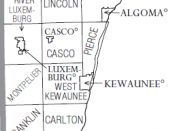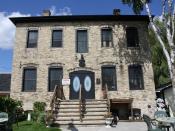A school police liaison officer placed in our school district would be a benefit to our school, students, and our community.
The Wisconsin Juvenile Officer Association defines a school police liaison officer as a "counselor, resource person, and educational aide, in addition to being a law enforcement officer, who by definition has an obligation to serve, protect, and uphold the law."ÃÂ He or she should be a friend and a listener to youth with personal problems. Their role is to build relationships with all the youth of our community and to especially target "at-risk" students. A liaison officer would know the kids well. He would also be at extracurricular activities, especially at night.
The first school police liaison began in Flint, Michigan in 1958 at Bryant Community Junior High School. By the end of 1965, all eight junior high schools and all eight high schools in Flint had liaison officers in their schools.
The first program in Wisconsin was in Superior in 1971. The city of Rhinelander started the program in 1975 and the city of Green Bay put a liaison officer in each of its four schools in 1976.
In the past seven years, over 250 students have been killed in schools. In 1997, 40 children were killed in school violence. The 1997-1998 school year, 67% of school administrators reported that they had weapons in their schools. In the United States roughly two million teenagers carry knives, guns clubs, or razors. About 135,000 take them to school. Every hour 2,000 children are attacked on school grounds in the United States.
According to Chief of Police, Todd Chaney, most of the crime in Algoma is juvenile crime. In 1997, Algoma reported 42 juveniles to social services. This is almost half of the total cases reported for all Kewaunee County. The city of Algoma and rural Algoma reported 31 cases of abuse in 1997. This is 43.66% of all the cases reported in all Kewaunee County.
The Algoma Police Department issued 89 citations to kids ages 12-17 in 1997. A school police liaison officer would be able to help these students from little on to make the right decisions and choices so they don't end up in juvenile court.
The Hortonville and Freedom School Districts have had vandalism dropped by 80% when school liaison programs were started.
The Clintonville Chief of Police, Mr. Terry Lorge said, "The liaison officer is the best position they have ever created." During the first year of school they had a 52% decrease in school-related police calls.
Some people feel that this is not a school problem but a community problem. Yes, it is a community problem, but the school is stuck with the problem because this is where the kids all meet.
Some people feel the school district should pay for it, and others think the city should pay for it. Everything costs money. If the Algoma School Board and the Algoma City Council understood the program and took a good look at it, they would see that the benefits outweigh the costs. I think that if we have the chance to lower juvenile crime in Algoma and help other students, we should take it, regardless of the cost.
Now the question to ask yourself is "Do we want to become another Columbine, Colorado, a Jonesboro, Arkansas, a Pearl, Mississippi, or a Paducah, Kentucky before we do something about it?"ÃÂ I'll bet those kids thought their schools were just as safe as we think ours are.





